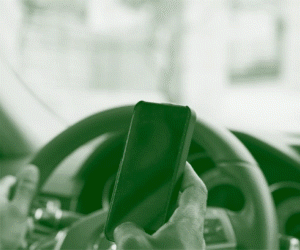 |
 |
 |
 |
|
McLEAN, Va. (AP)—A car speeds toward an intersection, about to collide with a van. Sensors spot the car about to run the red light, and a signal rushes to the car, triggering a high-pitched beep and a red light on the dashboard that says, emphatically, "STOP". This is the smart intersection of the future, and federal highway officials believe it will prevent thousands of traffic accidents every year. Test drivers used the nation's first prototype of the system on Tuesday to show what happens when a smart car meets a smart intersection. Much testing remains to be done and drivers probably won't start seeing them for another five years, say highway officials. The newly paved intersection at the Federal Highway Administration's Highway Research Center includes traffic signals, an advanced traffic controller system and two roads from nowhere converging in the middle of the agency's office campus in this Washington suburb. "It's not a `You can stop worrying, the car will drive itself'," said Jeffrey Paniati, associate administrator for Federal Highway. "It's a 'We'll help you drive'." The technology isn't all that new, say highway officials. Already on the road are smart cars and trucks that alert somnolent drivers, call for help in an accident and even take over some of the driving. What is new is behavioral
research into how people interact with traffic signs and
warning systems in their cars. An elderly driver in a Lincoln Continental on a country road might respond to different stimuli than an 18-year-old in a Camaro on prom night. "We're looking at all the options to find out when to give warnings and who responds to what," Paniati said. Engineers, for example, are studying the ideal pulse rate for a flashing "No left turn" sign to activate neurons in a driver's brain, according to James Misener, an engineer with the University of California at Berkeley. Here's how the sign works at the test intersection: Transportation officials say smart vehicles, combined with smart intersections, could significantly reduce traffic accidents. " When the two systems start talking to each other, we can exponentially save lives," said Mary Peters, Federal Highway administrator. Driver error is the leading cause of the 6 million crashes in the United States every year. About 4.5 million of those fall into three categories: 30 percent are rear-end collisions, 20 percent are run-off-the-road crashes and about 25 percent happen at intersections. The Bush administration wants to spend $1.7 billion over the next six years on intelligent transportation systems, 20 percent more than the past six. The aim is to get the new technologies into the marketplace and lower their cost so everyone can use them, Peters said. Mercedes Benz already sells passenger cars with rear-end collision avoidance systems, which take partial control of the vehicle to maintain a safe distance using radar, sensors and a global positioning system map. Commercial trucks have the systems, known as "adaptive cruise control," and General Motors is expected to sell the systems on some of next year's luxury models. "If it's starting in the Cadillac, that's fine," Peters said. "Like digital watches and calculators, the cost will come down." Roadway departure systems, which warn sleepy drivers they're about to go off the road, are also expected to be sold on cars soon.
|

|


